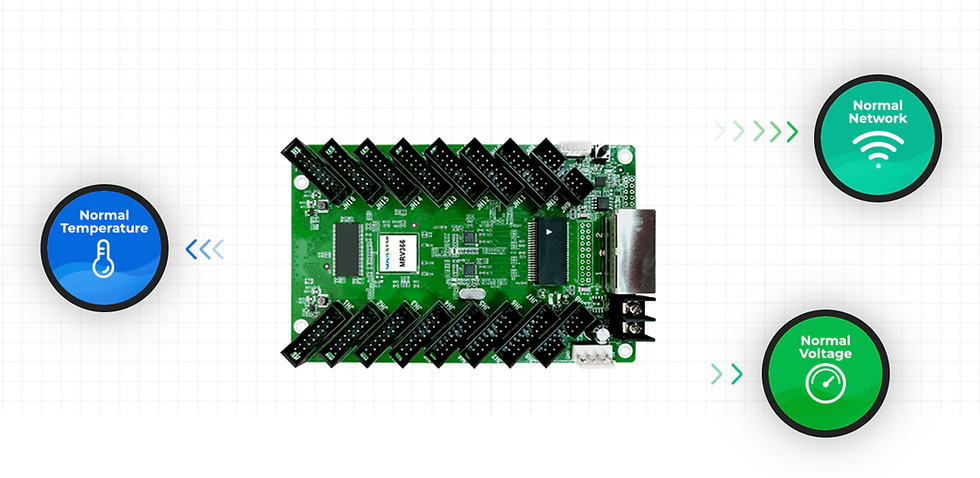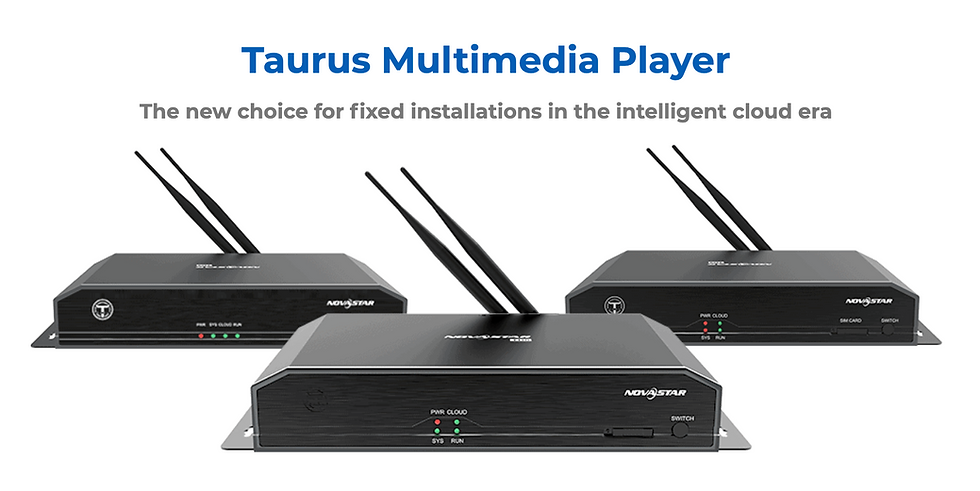How to choose the control system of the LED display?
- LEKLED
- Jul 1, 2021
- 3 min read
If the LED module, LED power supply, and wire are the hardware basis for the LED display, then the control system is its corresponding software part, similar to the "drive" of a computer. This article will give readers a detailed interpretation of the LED display control system and what should be paid attention to when selecting the LED display control system.
First of all, we know that the LED display screen is divided into two categories: single (dual) color and full color, then the corresponding LED display control system is also divided into two categories, single (dual) color control system and full-color control system. In addition, we need to distinguish the control system as a synchronous system and an asynchronous system based on whether the LED display is playing synchronously or asynchronously.

The single- and dual-color LED display content is mostly word files, such as the word display at the front of many stores, and the conference monogram shows the word, etc. The files of this type of playback content are relatively small, Up to 1-2M, the required memory is relatively small, so the control system of single and double color LED display screens are mostly asynchronous cards. The control system's sending methods include a serial port, network port, USB port, and increasingly popular mobile phone WIFI sending.
The single and dual-color control systems are popular among the following: control systems from Zhonghang, Huidu, Listen, Feikong, EQ, Kale, Guangzhou Xinyi, Qingyuan, etc.
The single (dual) color LED display control system generally has a read-back function, that is, as long as you open the corresponding software and read back the control card parameters, you can enter different text content in the corresponding editing interface. After editing, click Send. Can replace the original text content.
2, Full color LED Screen control system
Most of the full-color LED display content is pictures, videos, PPT, and other files with large data. According to the playback requirements, we can use either a synchronous playback system or an asynchronous playback system.
The synchronous playback system is mostly used to play video and PPT. Its main function is to display the playback content synchronously with the computer's display, that is, what is played on the computer and what is displayed on the LED display. It is mainly used in conferences, offices, stages, large exhibition halls, etc.
Generally set to "copy mode" at the computer display settings (or a few multi-screen synchronous playbacks require "expanded mode"). The most popular brands of synchronous playback systems are the following: Nova, Linsn, Colorlight, Kystar, Huidu, Zhonghang, etc. Among them, Nova has a higher market share in large screen applications And Kystar

Asynchronous playback system is mostly used to loop notifications, advertisements, promotional pictures, promotional videos. Its main function is to send text, pictures or videos to be played to asynchronous memory cards for loop playback. It is mostly used in small exhibition halls and streets. Advertising screen, door screen, traffic guidance screen, and other scenes.
In recent years, with the mature advancement of 4G technology, the combination of asynchronous playback system with 4G module loading is also popular in application scenarios that require remote transmission control, such as traffic guidance screens and street pillar screens. The more popular models of asynchronous playback systems are Nova's TB series, Huidu's C series, Colorlight's C series, and so on.

Of course, there are some niche application scenarios, such as special-shaped screens, large composite screens for bars, etc. In this regard, the most popular brand of domestic manufacturers is Mooncell, and the display effect of its special-shaped screens is still good.
Some customers have other needs, such as the need for audio, the need for a light sensor to adjust the brightness of the display, the need for remote control of electricity, etc. These can be achieved by loading the corresponding module.

Comments